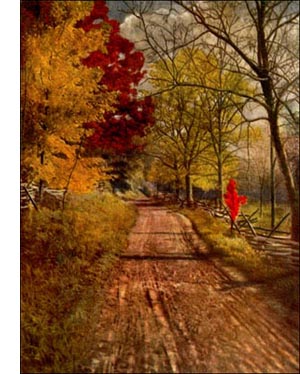Lawson Cypress Tree
 Lawson Cypress (Chamaecyparis Lawsoniana, A. Murr.)A spire-like tree, 150 to 200 feet high, with short horizontal branches ending in a flat spray. Bark very thick, with rounded scaly ridges, dark red. Wood hard, light, strong, pale yellow, close grained: resinous, fragrant, easily worked. Leaves minute, bright green, in opposite pairs. Flowers: minute, numerous; staminate bright red; pistillate dark coloured. Fruit clustered cones, pea sized, of few scales; seeds 2 to 4 under each scale. Preferred habitat, mountain slopes. Distribution, coast mountains of Oregon and California. Uses: A valuable ornamental tree. Wood used in house finishing, flooring, and in boat building and for railroad ties and fence posts. Matches are made of it.
Lawson Cypress (Chamaecyparis Lawsoniana, A. Murr.)A spire-like tree, 150 to 200 feet high, with short horizontal branches ending in a flat spray. Bark very thick, with rounded scaly ridges, dark red. Wood hard, light, strong, pale yellow, close grained: resinous, fragrant, easily worked. Leaves minute, bright green, in opposite pairs. Flowers: minute, numerous; staminate bright red; pistillate dark coloured. Fruit clustered cones, pea sized, of few scales; seeds 2 to 4 under each scale. Preferred habitat, mountain slopes. Distribution, coast mountains of Oregon and California. Uses: A valuable ornamental tree. Wood used in house finishing, flooring, and in boat building and for railroad ties and fence posts. Matches are made of it.Somewhat of the beauty of those Western cypresses can be appreciated by looking in gardens and nurseries at the multitude of varieties of each of them in cultivation in this country and abroad. In their own country the parents of these precocious ornamental offspring are to be seen. No horticultural substitute for the original will suffice the tree lover. To go to Oregon is his fondly cherished plan. To see that twenty-mile forest belt of Lawson cypresses that stretches from Point Gregory to the mouth of the Coquille River-only this will satisfy. There are men who name as "the handsomest of the conifers" trees outside of this genus, but the visitor to this splendid grove of Lawson cypresses will be inclined to deny it. It is hard to keep to a sliding scale and avoid superlatives in judging those Western trees.
The Japanese Retinosporas, beautiful evergreen of this type, widely cultivated in many horticultural forms, were assigned to a separate genus by Siebold and Zuccarini, but other authorities consider them all to be juvenile forms of the genus Chamaecyparis, or Thuya. These evergreens have in youth different foliage from that of the adult trees-a sufficient reason for confusion, especially before the trees bear cones. Whatever botanical affinities are eventually established, the trade name will probably remain Retinospora, and people will plant these handsome evergreens in increasing numbers. In his Manual, 1905, Professor Sargent includes two Japanese Retinosporas in the genus Chamaecyparis.